Image Credit: All photos: Eric Whetzel
Image Credit: All photos: Eric Whetzel The charred wood, depending on the angle and level of light, can take on silvery tones (although, in our experience, this mostly goes away once the wood has been oiled — producing a uniformly black appearance). Our stack of charred cedar siding grew steadily. Overall, it took about 80 hours to char all the siding we needed for our 1,700-square-foot house. That didn't include the time it took to oil the boards.
Editor’s note: This post is one of a series by Eric Whetzel about the design and construction of his house in Palatine, Illinois, a suburb of Chicago. The first blog in his series was called An Introduction to a New Passive House Project. For more details, see Eric’s blog, Kimchi & Kraut.
For our siding, we’re using an old Japanese technique for preserving wood called shou sugi ban (a.k.a. charred cedar — although any number of species of wood could work).
There’s some flexibility in exactly how it’s done, and there are various looks that can be achieved. We’re going for mostly a “gator” finish, meaning the cedar will have an alligator skin-like appearance. This is considered a heavy burn.
An alternative way of doing it would be to “gator” it first with fire, then scrape the excess char off, leaving behind a smoother, lighter, but still charred and protected finish. (Here’s a link to a video showing the difference between the dry and wet brush process.)
There are companies in the U.S. that are exploring the limits of what can be done with shou sugi ban, including the use of various species of wood, a range of options in the level of char, and potential areas for its installation. These companies include Delta Millworks in Texas and the reSAWN Timber Company in Pennsylvania.
Either way, the char doesn’t go very deep into the wood, and it doesn’t have to in order to be effective — either for looks or durability.
For instance, once the wood has been charred, it will be fire-resistant. The charred surface actually protects the wood from further burning. I had to see this to believe it, but if you char a piece and then hold the torch in one spot it really does resist burning. (You can eventually reduce the wood to ash, but it takes a surprisingly long time.)
The charred wood will also be unappetizing to insects or rodents, and once covered in its attractive black armor, the surface can face decades of sun and rain (80-100 years is the usual claim for its longevity) with little or no maintenance, apart from an occasional fresh coat of oil (every 15 years or so?).
Our wall assembly will utilize a fairly substantial rainscreen, meaning there will be significant air movement behind the siding, so one could argue it should be unnecessary to char the back of each piece, but we’ve chosen to do so for the added peace of mind (and not a really significant amount of additional time — and the charring is fun to do anyway).
For cut ends and mitered joints, we will use tung oil to help seal these areas (similar to painted wood siding that gets a swipe of oil based primer in these same spots just before installation).
Looking for a range of char levels
Most of the siding will be 1×6 tongue-and-groove. The remaining 1x material will be for areas of trim.
Once charred, the wood can be installed immediately, or, as we’ve chosen to do, treated with oil. After experimenting a little back in 2015, applying an oil finish seems to bind the char to the wood better than leaving it just “as is” (regardless if the level of char is light or heavy).
Also, if you don’t oil, then the surface remains like a charcoal briquet, so any time it’s touched some of the char will rub off — just imagine the reaction of friends or family the first time someone leans against the siding, or if you have kids running around and they touch the char. It could be a real mess.
In addition, if you choose not to oil, then every time the charred wood is cut during installation, black dust will go flying. (Whoever does the installation will not be pleased when their hands, bodies, and lungs are covered in a layer of fine soot — picture a 19th century Welsh coal miner.)
So for durability, looks, and ease of installation, we’ve decided to take the extra step of oiling each piece as well. (More about this process in our next post at GBA).
Charred wood can take on silvery tones (see Image #2, below). There is a range in the level of char we want to achieve. While most boards will have the gator finish, much lighter boards will be part of the mix as well. We think this will make for a more interesting overall look, but it also takes the pressure off, slightly, if you have more than one person doing the charring. (Each person will have a slightly different definition of “gator.”)
We’re also curious to see how the lighter boards will age with time: Will the lighter undertones of raw cedar turn gray and blend nicely with the char? Or will the natural color, peeking through the black surface, stick around longer than we think?
Tools for the job
As far as the tools involved, the “Inferno” torch — available through Amazon.com and at our local Home Depot — proved to be a real workhorse.
We were planning to use the typical 40 lb. propane tank that’s used for grilling. Fortunately, my wife was smart enough to look around online for us, and she found 100 lb. tanks instead. They have worked out great — no trips to a big box store for refills on the smaller tanks. And by buying the gas in bulk, we’ve saved some money as well.
You can follow the level of the tank by looking for condensation. The only downside to these larger tanks is once they hit this level, about 1/4 full, pressure drops significantly, so it takes twice as long to burn a board.
The Inferno comes with a 10-foot hose. That works okay, but we bought a 25-foot extension hose on Amazon that definitely makes life easier by allowing you to get farther away from the tank for a wider range of motion. If you decide to use an extension hose, you’ll need the correct sealant to make proper sealed connections. (We used RectorSeal T Plus 2.) If you’re lucky, someone in the tool repair section of your local hardware store will do this for you.
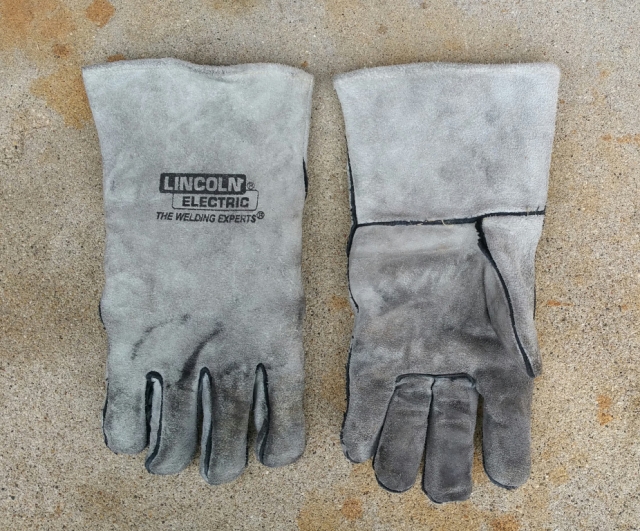
In terms of safety, in addition to a pair of sunglasses or construction safety glasses, proper hearing protection is a must. If you’re doing just one or two boards, the noise level of the torch isn’t a big deal. However, if you plan to do dozens of boards at one time, we would definitely recommend some kind of hearing protection. The torch is undeniably loud. (We’re lucky we have patient, forgiving neighbors.)
Welding gloves also have been a real help. On windy days, the boards tend to stay lit longer, but it’s easy to just pat or rub out the small areas of flame with the welding gloves. And they’re a must for moving the boards around right after charring. We found ours in Home Depot’s tool department.
We also keep a couple of 5-gallon buckets around, partially filled with water, so it would be easy to toss it at someone who’s just burst into flames. (Let’s hope this never happens.)
In addition, we have a 6-foot step ladder set up as a station to hold the torch when not in use, and it’s a convenient spot to drape a garden hose with a nice spray nozzle, so it’s in easy reach if something should go wrong. We also occasionally spray down the concrete, hoping this discourages any stray embers from landing and then floating away to ignite something in the surrounding area.
To be honest, the only time I got myself in trouble was when the 100 lb. tank was 1/4 full and the pressure had dropped. Normally, we barely have gas running through the hose and coming out of the torch because the boost switch on the torch is so effective. Because of the pressure drop, I turned up more gas, hoping it would counteract the loss of pressure, but instead I just managed to catch my jeans on fire at the knee (momentarily, thanks to a handy 5-gallon bucket of water). I was extremely lucky, and lesson definitely learned.
Right as the sun is going down is the most exciting time to burn — the flame becomes vivid, and it’s really fun to watch as it dances across the surface of the board.
The 1x material, whether 1×6 or 1×8, takes longer to burn since we found it impossible to get the face and the edge all in one pass. You can definitely pick up more of a rhythm with the 1×6 tongue-and-groove boards. And we haven’t gone for a gator appearance on the back (smooth side) of each board, instead going for a lighter char, which also helps to speed things up for each board.
How much does it cost, and how long does it take?
For our single story, just under 1,700-square-foot house (outside dimensions), with an attached two-car garage, these are how our numbers break down:
- Time to burn (per board): about 1-2 minutes a side.
- In 6-8 hours, 40-80 boards is realistic (depends on level of char, and if it’s 1x or T&G).
- Total time to burn all the boards we should need: ±80 hours.
- For torch, hearing protection, welding gloves, extension hose: $100-$150.
- Per 100 lb. tank: $80-90 (8 total tanks to finish).
- 1x2s, or similar material, for stacking the completed boards: $100-$200.
- #3 or better Cedar (1×6 T&G, 1×6, and 1×8): approx. $8,000-$10,000.
Keep in mind, this doesn’t include the time or expense required to oil each board (again, more on that later).
One final, additional challenge was getting quality boards.
Our first order of cedar, via a big box store, came from Mary’s River. (They’ve either gone out of business, or their manufacturing plant burned down — depends on who you ask.) Their rate of waste was about 10%-15%, so not bad at all. It felt like I had to go looking for bad boards (boards bending to the left or right at the end, U-shaped from the middle, broken or missing tongues/grooves, or cracked/split boards).
In subsequent orders, with a company called Tri-Pro, the rate of waste was about 40%. Luckily, the big box stores are okay with returns; nevertheless this gets frustrating. And even with the big box stores themselves, there can be significant differences in quality from one location to another. Our first couple of orders were poorly packed and just wrong. Then, after going to a second location to order, we got a neatly packed pallet that had been protected by plywood.
I can’t tell you whether the person (or persons) who put this specific pallet together actually enjoys their job, but what I know for sure is that they cared enough to do it right. Unfortunately, this level of quality and pride in workmanship is exceedingly rare — anywhere, in any occupation — so when you see it, it can’t help but stand out and grab your attention.
NEXT: Finishing the cedar
Weekly Newsletter
Get building science and energy efficiency advice, plus special offers, in your inbox.
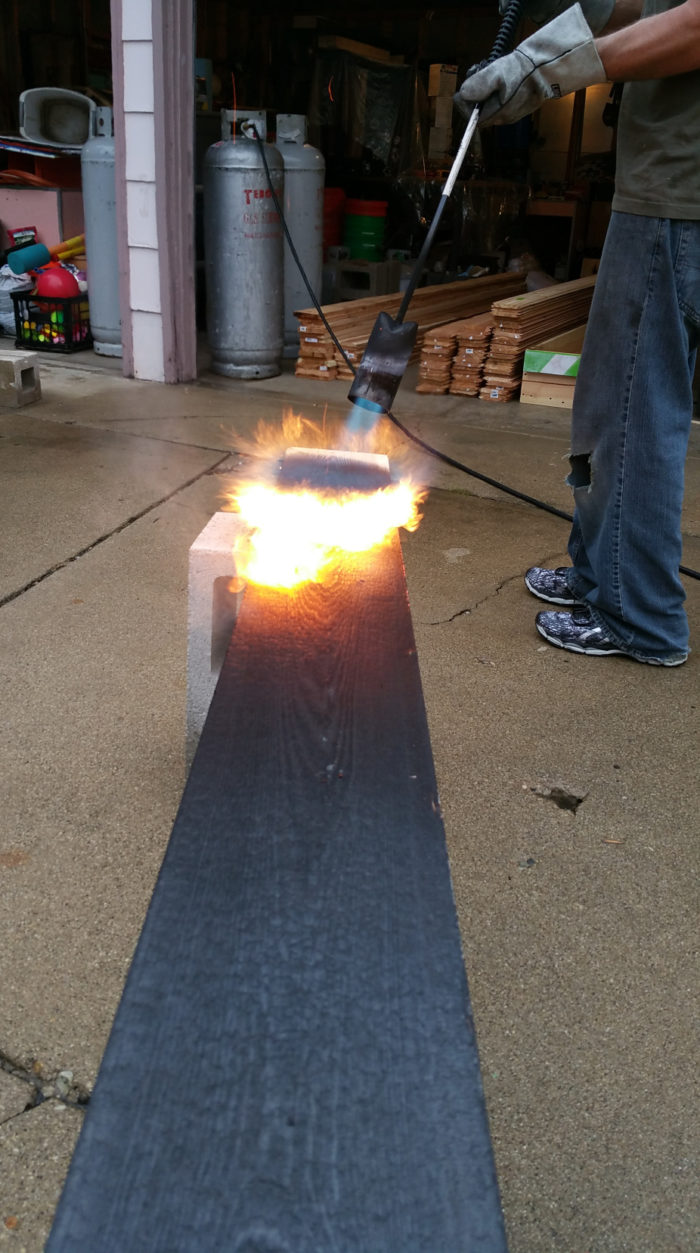




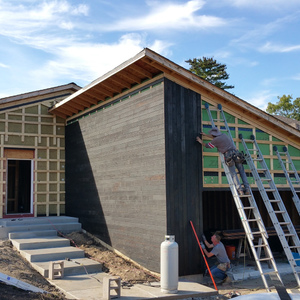
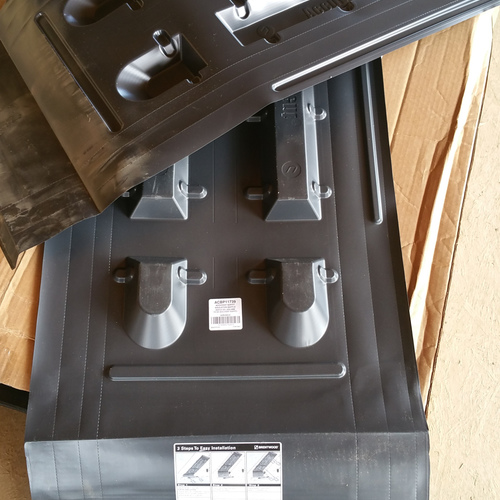
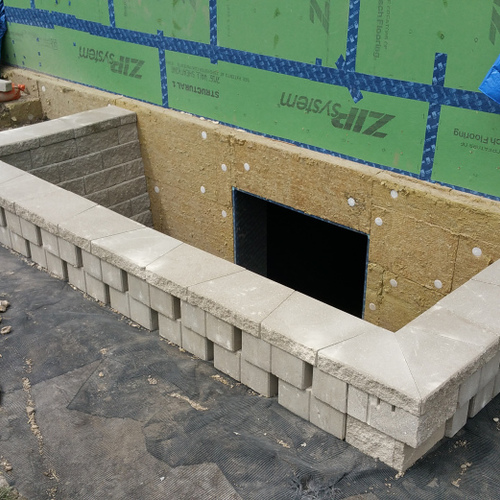
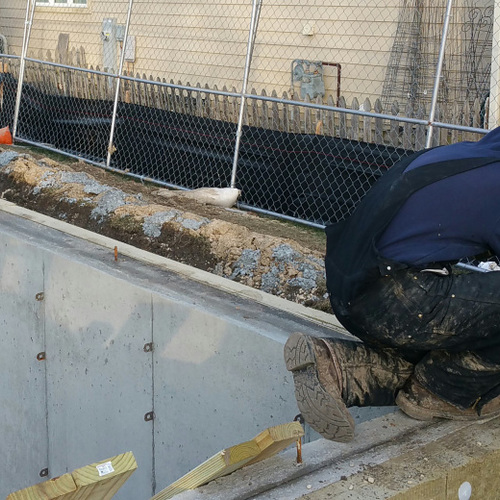






8 Comments
like this siding, too expensive for us
I looked into this a few months ago. I like the concept and the look, and if price was no object I would have gone with it (well, I would have tried, my wife probably would have vetoed it). I just couldn't justify the cost. It was going to be about 1/4 the cost of the entire house. That was for pre-finished stuff. With all the other tasks of building our house, I just could not fit in the weeks of charring and oiling myself.
Charring as fire protection
The idea that a charcoal-like surface provides fire protection seems somewhat counter-intuitive. The charcoal I put in my grill exhibits no resistance to ignition that I can detect. And the claim that charring somehow inhibits insect or fungal attack also seems to be somewhat shaky from wood science viewpoint.
Pine
Curious how this would work on rough sawn pine or hemlock.
I need to experiment.
I look forward to the follow up article on oiling.N
Upkeep
My nephew used it on a tiny house I helped him build. It looked great. The only downsides I could see were it wasn't very pleasant to touch or rub up against, and I wonder how easy it is to touch up if it is stained by bird droppings or mud and such. Maybe you just take a torch to it and re-oil?
I would think a bit of wire
I would think a bit of wire brushing would remove a bird dropping. But wouldn't it have just a natural weathering, dirt turns into character effect..
Scott
That did seem like one of the benefits. It wasn't a cladding that seemed like it needed to be kept in pristine condition to look good.
My reservations about it being pleasant to touch aren't unique to it either. I lived in a stucco house where the aggregate was broken glass fragments. Something that was fairly common in Vancouver 1960's construction. It had a certain appeal, but wasn't something you wanted to rub against.
I did some work with this technique...
I did some tests a couple years ago on some cedar fence boards. Our goal was (and may still be) to replace a fence with material treated this way. I did some very dark/'gatored' style and then various levels of lighter burning. I also soft brushed the darkest boards and wire brushed some of the others. After couple of years of being rained, snowed on, etc they all pretty much look the same. The lighter ones grayed a bit in then less burned areas, which looked cool. The darkest ones more or less looked the same as the day they were buned. In all cases, the sootiness was lessened by just being exposed to the elements.
I didn't seal them in any way and if you go online and look around, a lot of people seal the wood one way or the other. Usually tung oil. There is a new restaurant around me that is burned cedar both inside and out. The inside stuff doesn't cover the patrons in soot. So clearly it was sealed in some way.
Here is a lovely video of a young designer who did this in Maine. I have to say the whole process is quite a bit more peaceful and romantic this way. Also, he's burning a few at once, so I'd be curious if the propane is actually faster. It's stinkier anyway. I believe he is just burning pine. See how he has prepped a few triangle chimneys. With a couple people I'd think this method would be faster and more enjoyable. Prep 10 chimneys, one person prepping, that person also pouring the water on after, and one person minding the burn process and the fire, then coat a few dozen boards with oil!
https://www.anthonyesteves.com/shou-sugi-ban
Log in or create an account to post a comment.
Sign up Log in